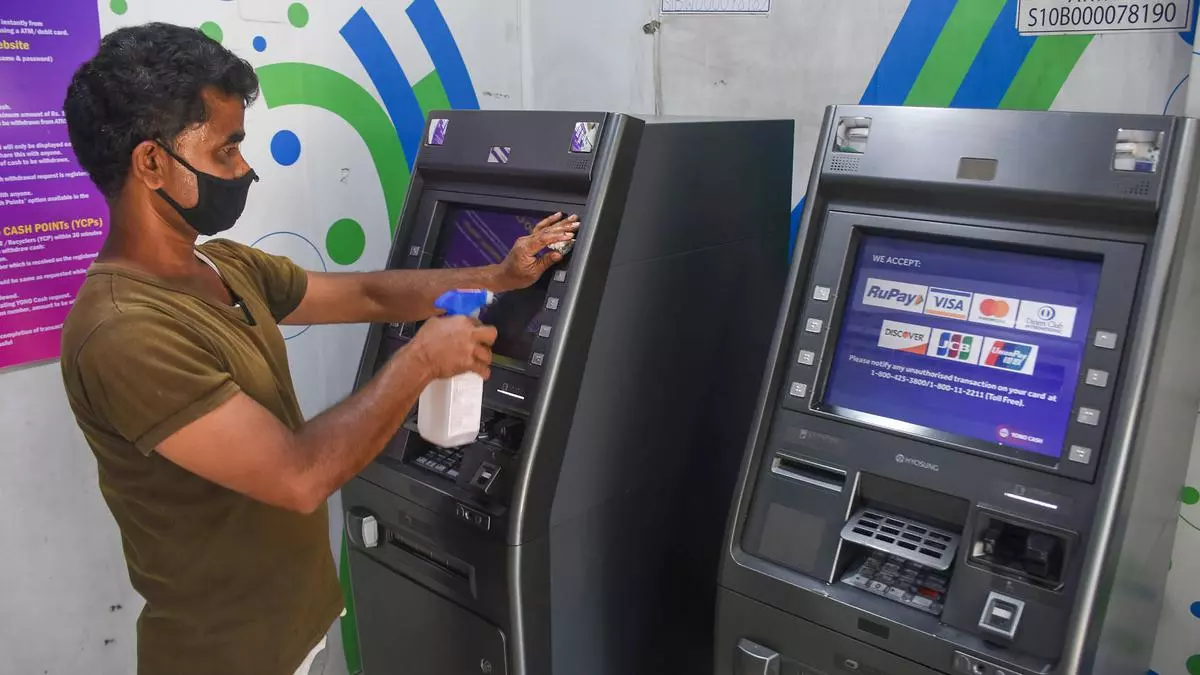Banks to go in for big ATM push in the next 12-18 months
Banks are likely to see a big ATM refresh-cum-addition cycle in the next 12-18 months, involving replacement of about 40,000 ageing ATMs, and expansion of network by about 10,000, per industry estimates.
All scheduled banks collectively added 4,452 ATMs (automated teller machines) in FY23, with their network standing at 2,19,513 as at March-end 2023, per RBI data.
White label ATM operators expanded their ATM network by 4,292 ATM’s in FY23 to 35,791 as ofMarch-end 2023.
“There will be a lot of churns in the ATM estate because many machines are ageing. They have to be refreshed. There are lot of regulations around ATM hardware and software now. So, it is making the banks change the old ATMs quickly,” Manjunath Rao, President – Managed Services, CMS Infosystems, said.
Focus areas
He observed that in the first half of FY24, there were bank ATM mandates for 15,000 units. This reflects their focus on replacement and network expansion.
“Private sector banks (PVBs) are moving from cash dispensers to cash recyclers as it will help reduce branch walk-ins for deposits. This will reduce the overall operating cost. So, this has caught their fancy.
“And, public sector banks (PSBs) are not far off. So, some of the major PSBs also, side-by-side, are putting cash recyclers,” Rao said.
An ATM costs about ₹3.5 lakh while a cash recycler costs about ₹6 lakh. Assuming that 25 per cent of the 50,000 ATMs that will be deployed will be cash recyclers, the overall capital expenditure for banks could be around ₹2,000 crore.
During 2022-23, the total number of ATMs (on-site and off-site) grew by 3.5 per cent, primarily driven by increase in the number of white-label ATMs (WLAs), according to RBI’s latest Report on Trend and Progress of Banking in India.
Amongst the ATMs operated by scheduled commercial banks (SCBs) at end-March 2023, the share of PSBs and PVBs was 63 per cent and 35 per cent, respectively.
At end-March 2023, ATMs of PSBs were more evenly distributed across geographies than other bank groups whose ATMs were skewed towards urban and metropolitan areas, per the report. In contrast, a majority (51 per cent) of WLAs were concentrated in rural areas.
Traditional model
Rao said: “We are following the traditional global model – one branch, two ATMs (one onsite and one offsite). As private sector banks penetrate into SURU (semi-urban and rural) areas, that many ATMs will be required.
“These banks want a branch as a selling point rather than a servicing point. They want servicing to be on self-service mode to reduce the cost. So, that cost arbitrage is still there between a self-service channel and a branch,” Rao said.
He emphasised that the ATM channel cannot be discarded at all because lakhs of transactions happen every day. The cost of servicing a customer at a branch is at least three times the cost of servicing him/ her at an ATM.
